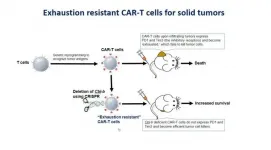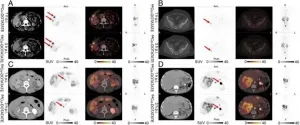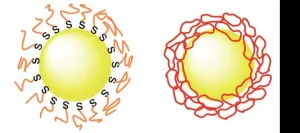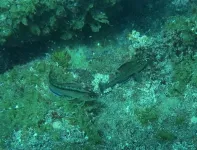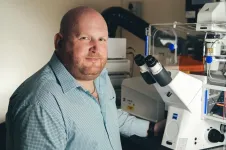(Press-News.org) DALLAS - Jan. 19, 2021 - Eliminating a single gene can turn exhausted cancer-fighting immune cells known as CD8+ T cells back into refreshed soldiers that can continue to battle malignant tumors, a new study led by UT Southwestern researchers suggests. The findings, published online this week in the Journal for Immunotherapy of Cancer, could offer a new way to harness the body's immune system to attack cancers.
In 2017, the Food and Drug Administration approved treatments involving chimeric antigen receptor T (CAR-T) cells, which consist of immune cells known as T cells that have been engineered to recognize specific proteins on the surface of cancer cells. When these cells are delivered by infusion, they mount a targeted immune response against cancer cells.
CAR-T cells have been successfully used to treat blood cancers such as leukemia and lymphoma, often with dramatic results, says Venuprasad Poojary, Ph.D., associate professor of internal medicine and immunology at UTSW. However, these treatments have had little success against solid tumors, such as those that develop in the colon, breast, and lung.
When CAR-T cells enter these solid tumors, Poojary explains, they quickly become dysfunctional and lose their cancer-fighting abilities. This state, referred to as "exhaustion," is accompanied by the addition of proteins, including PD1 and Tim3 on their surfaces and an inability to produce their usual immune-inciting molecules, such as Interferon-gamma and tumor necrosis factor. Finding a way to prevent CAR-T cells from becoming exhausted has become a significant goal in cancer research, Poojary adds.
Toward this end, he and his colleagues scoured published research comparing gene activity in working and exhausted T cells. The researchers quickly zeroed in on a gene called Cbl-b, which is more active, or upregulated, in exhausted cells.
Poojary and his colleagues confirmed that Cbl-b was activated in T cells that infiltrated tumors in a mouse model of colon cancer. Not only did these cells lose their tumor-fighting abilities, but they also developed a characteristic set of cell surface proteins and inability to produce, or express, immune molecules characteristic of exhaustion. However, when the scientists used the gene editing tool CRISPR to delete Cbl-b in these cells, they regained their cancer-fighting capacity and lost other exhaustion features.
Adding evidence to Cbl-b's key role in T cell exhaustion, the researchers used genetically altered mice in which this gene was shut down. When they transplanted cancer cells into these animals, the cells grew tumors markedly smaller than in cancer cells of mice with active Cbl-b.
Further experiments showed that removing Cbl-b also prevented exhaustion specifically in CAR-T cells, Poojary adds. When he and his team deleted this gene from CAR-T cells engineered to recognize carcinoembryonic antigen, a cell surface protein commonly overexpressed in colon cancer, the cells effectively fought cancer in mice bearing these tumors - significantly extending their survival. However, CAR-T cells with functioning Cbl-b quickly became useless, providing little anti-tumor effect in animal models.
Poojary and his colleagues are working to understand the molecular mechanisms behind how Cbl-b causes T cell exhaustion. Once researchers better understand this mechanism, he notes, using CAR-T cells to effectively treat solid tumors could be as simple as genetically engineering them without Cbl-b.
"Our study is a major step forward in developing CAR-T cells to fight solid tumors," Poojary says. "This could overcome the limitations of some current immunotherapy strategies for cancer."
INFORMATION:
Other UTSW researchers who contributed to this study include Jitendra Kumar, Ritesh Kumar, Amir Kumar Singh, Elviche L. Tsakem, and Mahesh Kathania.
This work was supported by grants from the National Institutes of Health (R01-DK115668, R01- DK117001), and the Cancer Prevention and Research Institute of Texas (RP160577, RP190527).
Reston, Virginia--The imaging time window of 64Cu-DOTATATE positron emission tomography/computed tomography (PET/CT) for patients with neuroendocrine neoplasms can be expanded from one hour to three hours post-injection, according to new research published in the January issue of the Journal of Nuclear Medicine. In a head-to-head comparison of scans performed at the two time intervals, there were no significant differences in the number of lesions detected, and tumor-to-normal tissue ratios remained high in all key organs.
Previous research has demonstrated that 64Cu-DOTATATE PET imaging at one hour post-injection provides excellent lesion detection in patients with neuroendocrine neoplasms. "Given the long half-life and excellent image resolution of 64Cu-DOTATATE, ...
Successful weight loss is considered to be an integral part of the therapy for type 2 diabetes. Nevertheless, studies keep appearing that question the importance of losing weight. However, new data from a large-scale observational study carried out at DIfE in cooperation with the German Center for Diabetes Research (DZD) support the current recommendations of physicians. The findings, published in the journal Diabetologia, suggest that obesity and weight gain can lead to vascular disorders, the leading cause of disease and death for people with type 2 diabetes.
A close look at vascular disorders
Weight plays a crucial role in the development of type 2 diabetes. However, ...
Chemical engineers at UNSW Sydney have found a way to make 'green' ammonia from air, water and renewable electricity that does not require the high temperatures, high pressure and huge infrastructure currently needed to produce this essential compound.
And the new production method - demonstrated in a laboratory-based proof of concept - also has the potential to play a role in the global transition towards a hydrogen economy, where ammonia is increasingly seen as a solution to the problem of storing and transporting hydrogen energy.
In a paper published today in Energy and Environmental Science, the authors from UNSW and University of Sydney say that ammonia synthesis was one of the critical achievements of the 20th century. When used in fertilisers ...
It takes a lot to make a wooden table. Grow a tree, cut it down, transport it, mill it ... you get the point. It's a decades-long process. Luis Fernando Velásquez-García suggests a simpler solution: "If you want a table, then you should just grow a table."
Researchers in Velásquez-García's group have proposed a way to grow certain plant tissues, such as wood and fiber, in a lab. Still in its early stages, the idea is akin in some ways to cultured meat -- an opportunity to streamline the production of biomaterials. The team demonstrated the concept by growing structures made of wood-like cells from an initial sample of cells extracted from zinnia leaves.
While that's still ...
Hokkaido University scientists have found a way to prevent gold nanoparticles from clumping, which could help towards their use as an anti-cancer therapy.
Attaching ring-shaped synthetic compounds to gold nanoparticles helps them retain their essential light-absorbing properties, Hokkaido University researchers report in the journal Nature Communications.
Metal nanoparticles have unique light-absorbing properties, making them interesting for a wide range of optical, electronic and biomedical applications. For example, if delivered to a tumour, they could react with applied light to kill cancerous tissue. A problem with this approach, though, is that they easily clump together in solution, losing their ability to absorb light. ...
Thirty-five people have died in the custody of U.S. Immigration and Customs Enforcement (ICE) since April 2018, with a seven-fold increase in deaths even as the average daily population decreased by nearly a third between 2019 and 2020, a new USC study shows.
"Potentially preventable causes of death -- including COVID-19 infection, influenza and suicide -- are responsible for at least half of recent deaths," said researcher Sophie Terp, an assistant professor of clinical emergency medicine at the Keck School of Medicine of USC and a clinical scholar at the USC Schaeffer Center for Health Policy and ...
Research from the University of Adelaide has found that some species of fish will have higher reproductive capacity because of larger sex organs, under the more acidic oceans of the future.
Published in PLOS Biology, the researchers say that far from the negative effects expected under the elevated CO2 levels in our oceans predicted for the end of the century, these fish capitalise on changes to the underwater ecosystems to produce more sperm and eggs. They also look after them better, enhancing the chances of reproductive success.
"The warming oceans absorb about one-third of the additional CO2 being released into the atmosphere from carbon emissions, causing the oceans to acidify," says lead author Professor Ivan Nagelkerken from the University's Environment ...
Dendritic cells are a vital component of the innate immune system, which constitutes the body's first line of defense against infectious agents and tumor cells. Their job is to activate the T-cell arm of the adaptive immune system, which confers specific and long-lasting protection against bacterial and viral infections. Dendritic cells engulf and degrade proteins that signal the presence of invasive pathogens. The resulting fragments (antigens) are displayed on their surfaces. T cells bearing the appropriate receptors are then activated to seek out and eliminate the pathogen. Newborns and young children ...
Packing a lunchbox with fruit, sandwiches, and snacks is common practice for most Australian families. But what if there was another way?
Flinders University researchers investigating the pros and cons of school-provided lunches say uniform delivery of lunchtime food at school could be a solution to better childhood nutrition and learning in Australia.
Flinders Caring Futures Institute deputy director Professor Rebecca Golley says universal school-provided lunch models - a common practice in other countries such as the UK - would involve all children in the ...
Scientists have for the first time established a sensory neuron model able to mass-reproduce two key sensory neuron types involved in pain sensation, enabling the easy generation of large numbers of the cells to fast-track chronic pain research.
In research applications usually sensory neurons need to be isolated from animals. They represent a wide variety of different cell types, making it difficult to collect and isolate large quantities of pain sensing neurons.
Using a new technique, researchers at Flinders University have found a way to reproduce millions of the cells, providing ample resources for the simultaneous testing of thousands of samples or potential drug libraries.
"Our ...
